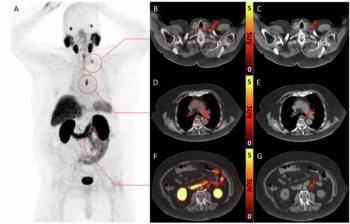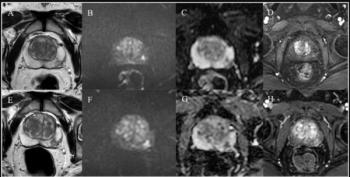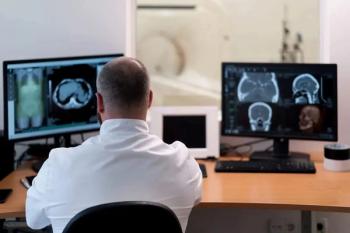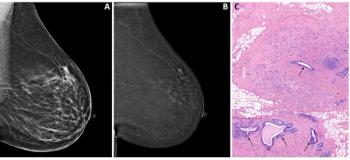
Radiology in the Era of Payment Reform
Experts at RSNA share what radiology will look like with payment reform.
“When you think of your own physicians, it’s not that outrageously high of a number to think that 50% of your own practice may not even know what MACRA is,” Ezequiel Silva, MD, vice chairman, ACR Commission on Economics, said at RSNA 2016.
The Medicare Access and CHIP Reauthorization Act (MACRA) of 2015 is a
“We are being judged with all other physicians in medicine,” Silva said. He clarified that the statute recognizes two categories, patient facing and non-patient facing physicians. Radiologists must ask themselves which category they consider themselves to be in.
“We believe we are a patient-centered specialty, however, there are clearly advantages to the statute classifying radiologists as non-patient facing,” he said, noting that there were reduced measures more easily attained and focused solely on quality and improvement actions for those non-patient facing participants.
“Radiologists that report to CMS as an individual and have more than 100 patient-facing encounters within a year or report as a practice where 75% or more of the group has patient-facing encounters will be classified as patient-facing,” Silva said. EM Codes are considered patient facing and certain procedural codes such as breast biopsy, paracentesis, TIPS, and other IR procedures may be considered under the category once CMS finalizes the statute.
Regardless of classification, in the first performance period of 2017, neither category will be judged on cost. The strongest weighting factors will be those focused on quality, making up 85% of the non-patient facing factors and 60% for patient facing. Reporting will be judged on six quality measures, including one outcome measure, and can be reported through a claim or registry based system. [[{"type":"media","view_mode":"media_crop","fid":"56070","attributes":{"alt":"Ezequiel Silva, MD","class":"media-image media-image-right","id":"media_crop_8132763665610","media_crop_h":"0","media_crop_image_style":"-1","media_crop_instance":"7039","media_crop_rotate":"0","media_crop_scale_h":"0","media_crop_scale_w":"0","media_crop_w":"0","media_crop_x":"0","media_crop_y":"0","style":"float: right;","title":"Ezequiel Silva, MD","typeof":"foaf:Image"}}]]
Discussing the other key component to QPP required by both categories, improvement actions, Silva shared, “
Silva shared that radiologists should be asking themselves where they want to be within the program on day one given the opportunity granted by CMS for physician determined pacing. Looking towards the future of payment policy related to improvement actions, “we have to embrace patient-centeredness,” he shared concluding, “It is not just terminology. It is a requirement.”
“We always knew that the important thing that was going to incentivize us, make it scalable, and make patient-centered care last was going to be crafting meaningful incentives that we could support doing,” Geraldine McGinty, MD, MBA, of Weill Cornell Medicine, who works alongside Silva on the ACR Commission on Economics, said.
Discussing the evolution of patient-centered care within radiology, McGinty said there has been a culture change over the last four years from doing to and doing for, to doing with. With the ultimate goal being shared decision making, McGinty said, “We are now bringing patients into the discussion.”
The ACR introduced Imaging 3.0 as well as the Commission on Patient- and Family-Centered Care to educate and share information while increasing visibility and patient community collaborative efforts. “CMS now actively contacts the ACR to get feedback on policies,” she said, which opens up a new, more collaborative relationship with policy makers.
There are many patient-centered opportunities within both the quality and improvement outcome categories, shared McGinty, who stated even tying a relatively small percentage of the payment pool to improvement outcomes related to patient-centered care results in a seven-figure sum for her practice. “That really starts to give us energy about what we might do differently,” she said, noting that it is important to think about the metrics process, which will be ongoing.
“Developing metrics around patient engagement and satisfaction in radiology gives us a huge opportunity to craft meaningful metrics around the type of care we want to be giving our patients,” McGinty said. Sharing valuable tools including Image Wisely and R-Scan allows radiologists to be the stewards of imaging in the short term. Focusing on the long term, radiologists can continue to focus on the quality domains to drive visibility and change improvements that directly impact patients. Creating visibility through photographs and communication tools as a patient enters an imaging center, direct patient access to reports, fostering collaboration with patients through tumor boards, design teams, and advocacy, and having radiologists serve on hospital ethics committees increase value that will help define future metrics.
“Every time I talk to the patient, I get an opportunity to make sure the patient is getting the image they need as well as a conversation with the patient that is meaningful to them,” McGinty said, who noted that engaged patients statistically do better on metrics, including readmissions. She concluded, “nothing is more energizing than interacting with patients. It’s the right thing to do and it feels really good.”
Newsletter
Stay at the forefront of radiology with the Diagnostic Imaging newsletter, delivering the latest news, clinical insights, and imaging advancements for today’s radiologists.






























